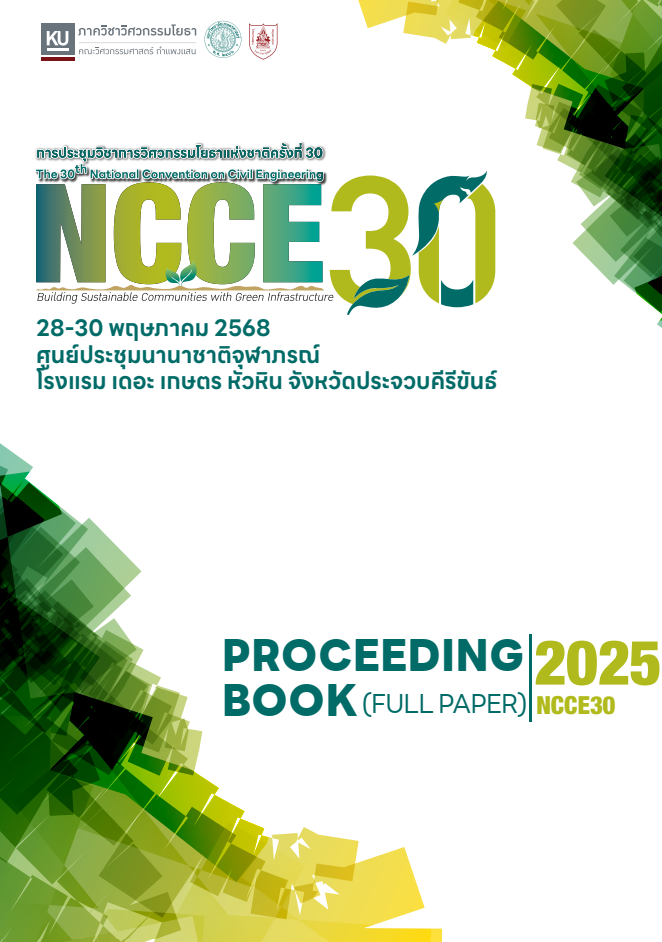Lateral Movement of Rigid Diaphragm Wall and Associated Ground Movement of Deep Excavation in Bangkok Subsoil
คำสำคัญ:
Diaphragm wall, Lateral displacement, Deep excavation, surface settlementบทคัดย่อ
Bangkok, a densely populated city with limited land availability, requires the construction of high-rise buildings with underground basements and parking spaces. Therefore, deep excavation work for underground structures is important and understanding the lateral displacement of retaining walls is crucial for assessing impacts on adjacent structures and preventing instability. Monitoring data of diaphragm wall movement from over 30 deep excavation projects in Bangkok was collected and analyzed to determine influencing factors and parameters of lateral movement of rigid diaphragm wall. Diaphragm walls’ thickness is ranging from 0.6 to 1.50 m with toe depths between 14m and 65m, with excavation depths (He) varying from 6 to 36 m. Key parameters including the relationship between maximum lateral displacement and excavation depth, depth of maximum lateral displacement, soft clay depth influence, and the influence zone of the surface settlement were examined. The study found that maximum lateral wall displacements ranged from 0.10%He to 0.27%He for the top-down method, and from 0.20%He to 0.50%He for the bottom-up method. The maximum lateral displacement typically occurred at a depth between 0.5He to 1.5He. The results also suggest that the excavation induced ground settlement may be affected up to 2.5 times the excavation depth.
ดาวน์โหลด
เผยแพร่แล้ว
วิธีการอ้างอิง
ฉบับ
บท
การอนุญาต
ลิขสิทธิ์ (c) 2025 Engineering Institute of Thailand

This work is licensed under a Creative Commons Attribution-NonCommercial-NoDerivatives 4.0 International License.
บทความที่ได้รับคัดเลือกนำเสนอในการประชุม NCCE ถือเป็นลิขสิทธิ์ของวิศวกรรมสถานแห่งประเทศไทย ในพระบรมราชูปถัมภ์ (วสท.) (Engineering Institute of Thailand)


